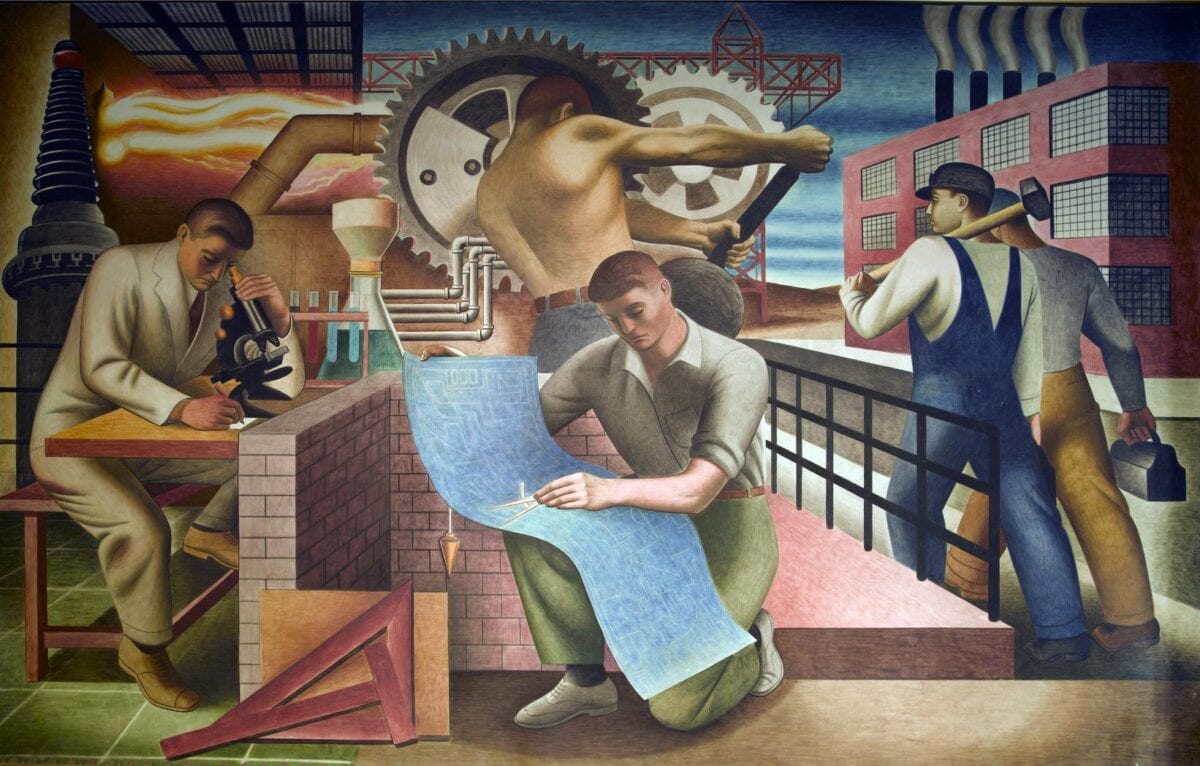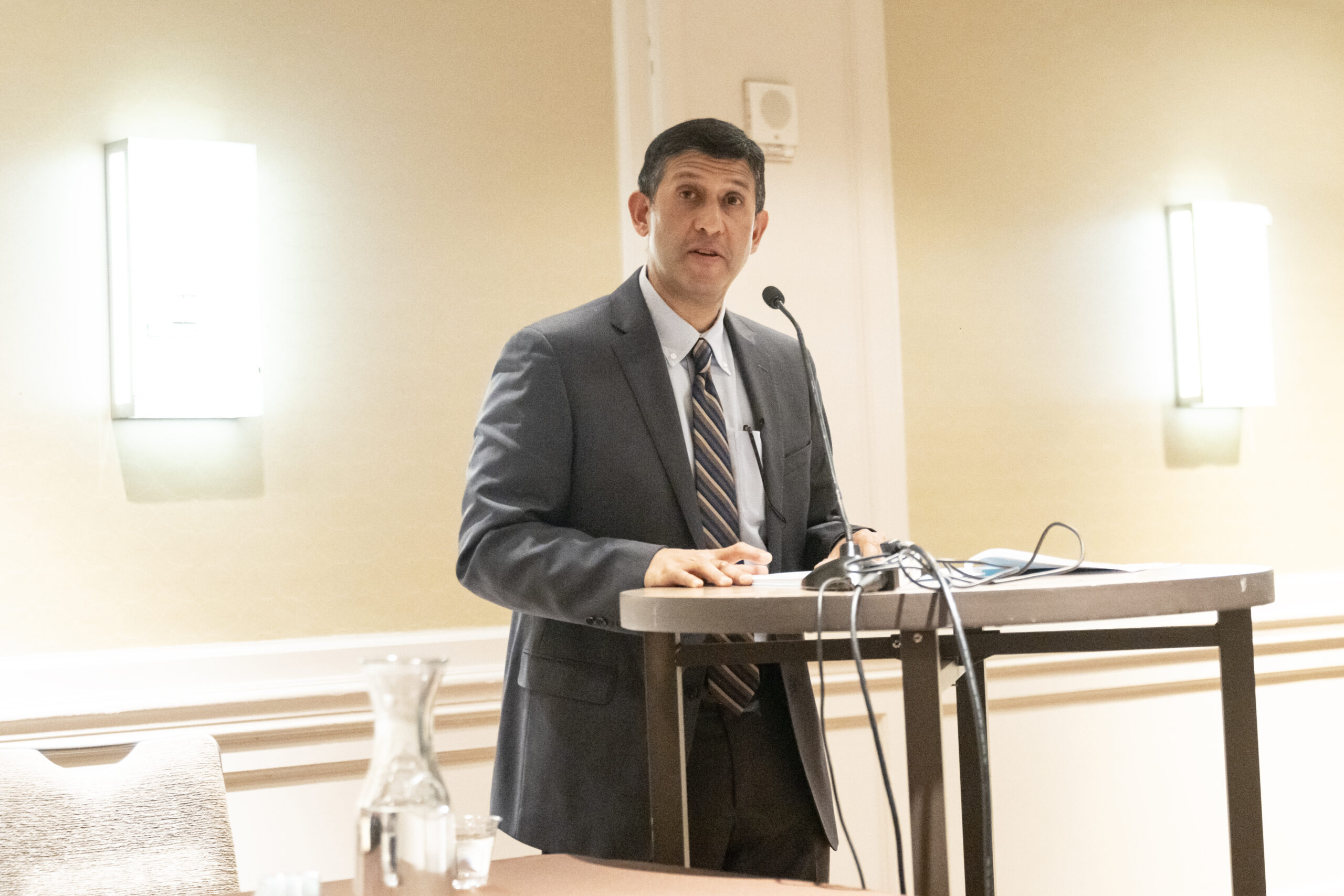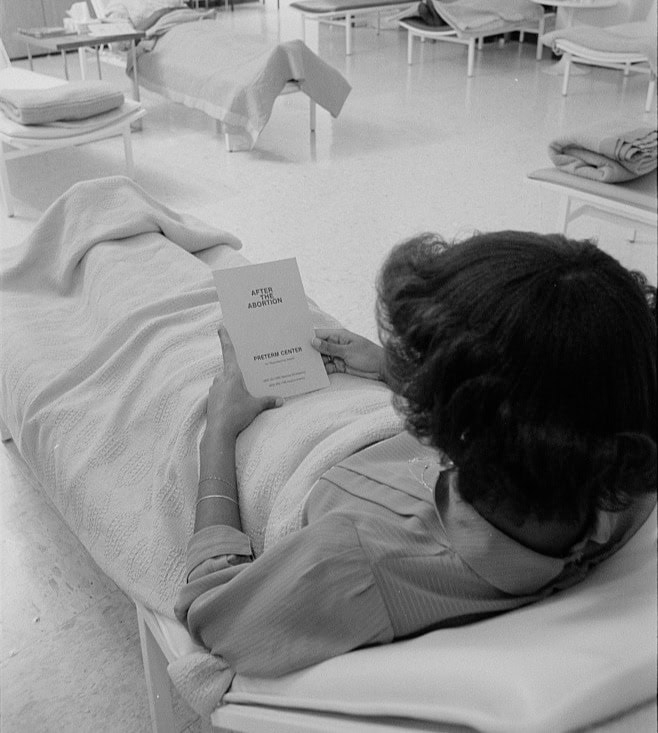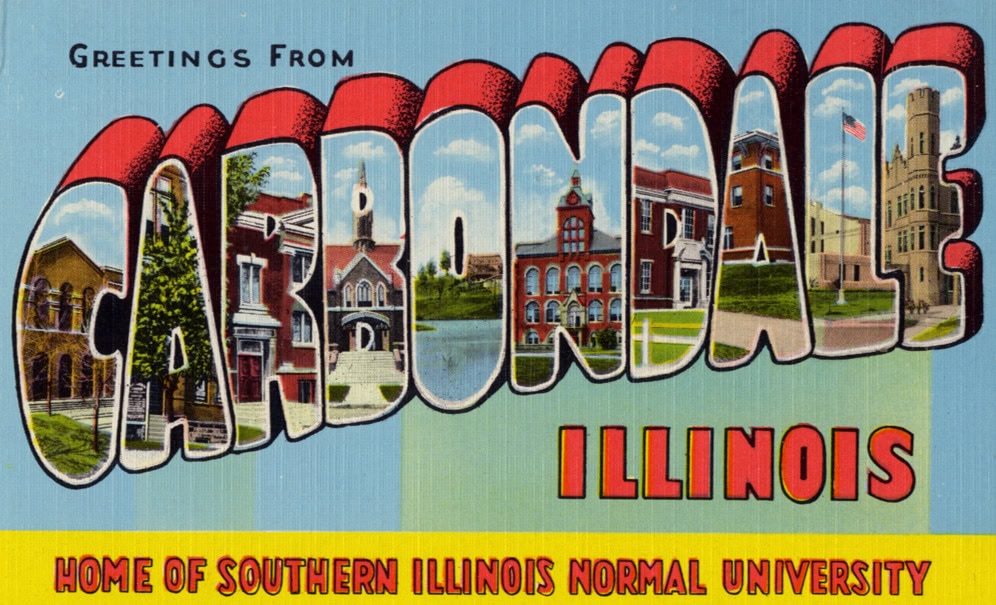Shrinking opportunities in traditional academic history positions, coupled with stagnant hiring for museum curators and corporate historians, has made the growing demand for policy expertise across federal and state governments, nonprofits, and industry a compelling alternative. Rather than concede these positions to public policy or administration program graduates, we advocate revising graduate training of historians with these occupations in view. Academic historians further along in their careers can contribute to public policy through a greater focus on implementation practices and by opening new pathways for the next generation through coursework and applied projects that complement existing conceptual and theoretical training.

A Works Progress Administration mural in the Wilbur J. Cohen Federal Building in Washington, DC. Carol M. Highsmith Archive, Library of Congress Prints and Photographs Division
These recommendations are based on discussions with science and technology policy leaders and a series of workshops held over the last 18 months. Organized by Arizona State University’s Consortium for Science, Policy and Outcomes and funded by the Alfred P. Sloan Foundation, the “Technology Policy—Think Deeply and Build Things” workshop (a deliberate play on Silicon Valley’s mantra to “move fast and break things”) explored how historians’ tools, insights, and knowledge can assist policymakers. We also held separate meetings with the Science, Technology Assessment, and Analytics unit of the Government Accountability Office (GAO); specialists at the Congressional Research Service (CRS); and the Society for the History of Technology. Although our focus in these workshops and meetings was the role of history in science and technology policy, the lessons extend to the historical discipline as a whole.
In recent years, concerns with rising geopolitical competition, environmental risks, and regional economic disparities have underpinned significant federal investments in science, technology, and innovation. During the last two presidential administrations, federal agencies and government entities like CRS and GAO increased hiring of analysts, program managers, and other professionals with skills commonly taught in history graduate programs. Though significant cuts during the second Trump administration have so far broken with this trajectory, we expect that the hybridization of industrial, technology, and science policy that marked Operation Warp Speed—as well as efforts to onshore semiconductor chips and other manufacturing—will lead eventually to renewed federal hiring.
At the state and local levels, more pragmatic “technology-based economic development” (in the words of the State Science and Technology Institute) has fostered an array of government, private-sector, academic, and nongovernmental organizations that hire people with skills and perspectives of the kind developed by history programs. States with science policy departments include California, Idaho, Missouri, and New York. As multinationals respond to tariffs and other federal policies with new manufacturing investments in the United States—such as the $100 billion announced in early March by the Taiwan Semiconductor Manufacturing Company—state and local governments will need policy insights rooted in historical methods.
Historical approaches can explore the policy choices that shaped a region’s strengths over decades.
State governments are playing an increasingly active role in technology-based economic development, with at least $1.25 billion appropriated by legislatures in FY 2023 alone to support innovation-driven economic growth. These investments range from targeted matching funds for federal initiatives to comprehensive approaches to build local research capacity, foster technology commercialization, support entrepreneurship, expand the STEM workforce, and provide seed capital. The scope and impact of these efforts highlight the need for policymakers and analysts who can contextualize state-level strategies within historical patterns of economic development, industry evolution, and regional policy experiments—another area where historians can make significant contributions.
A clear message emerged from our workshops and discussions. A period of rapid changes to industrial, technology, environmental, and education policy requires critical—and actionable—historical insights. Agencies assigned to convert formal policy (from Congress and the executive branch) into projects and programs on the ground seek informed and inclusive approaches. These policy implementers increasingly recognize the importance of institutional structures in reform efforts, the need for deeper community engagement, and the value of historical analysis in evaluating program effectiveness and proposing major initiatives.
Industrial and technology policy are currently undergoing rapid change, including but not limited to implementation of artificial intelligence and the deployment of novel methods for community engagement. Newer approaches to historical scholarship resonate with policy areas that include reviving US manufacturing, building regional innovation clusters in the Midwest and rural South, reducing pollution and waste in agriculture, and devising new security strategies in the face of rapidly shifting global alignments.
Policymakers often replicate economic programs without fully understanding why they succeeded elsewhere or how adaptable they are to new contexts. Historians, trained to analyze complex institutional, economic, and cultural dynamics over time, can offer valuable insights into the conditions that enable certain policies to succeed when others falter. Rather than simply trace current economic metrics, historical approaches can explore the foundational networks and policy choices that shaped a region’s industrial strengths over decades, identifying underlying factors for past success and more sustainable policy decisions for the future.
Preparing students for these opportunities requires curricular changes, starting with the modifications to graduate programs laid out below.
First, graduate seminars should incorporate sessions on how to work effectively with policymakers. Materials can include readings and discussion about existing and past efforts such as those found in the Applied History Project, an “explicit attempt to illuminate current challenges and choices by analyzing historical precedents and analogues” at Harvard’s Belfer Center for Science and International Affairs (with coursework inspired by May and Neustadt, Thinking in Time: The Uses of History for Decision Makers, 1986). In a recent essay in the Chronicle of Higher Education, Patryk J. Babiracki and James W. Cortada recommend using business case studies and engaging with applied business history. Compelling policy ideas fail without economic feasibility, realistic technological assessments, and regional community support. Historians are trained to consider these key factors.
Second, graduate students should practice writing policy-oriented briefs or essays as seminar papers. A key challenge of participating in policy debates is the need to be succinct, precise, and focused. Instead of the term paper or monograph, the goal here is an “elevator pitch” composed of one or two paragraphs: putting the conclusion first, followed by separate supporting sections offering context and narrating the benefits of a successful policy change.
Avoiding bad history—especially politicized myths and poor analogies—can be as important as providing good history. “It’s complicated” is accurate but not particularly useful. If a situation were simple, policymakers and implementors would not seek scholarly guidance. The pathbreaking historian of technology Mel Kranzberg’s first law stipulates that “technology is neither good nor bad, nor is it neutral.” Catchy, accurate, and influential, the phrase is not especially useful as a policy guide beyond seeing technology as a human creation whose consequences are fiendishly difficult to predict. Instead, if we put classic history together with scenario planning, we can begin to map decisions about technology adoption—identifying communities that have been empowered and technologies in need of regulatory oversight.
Third, at both university and departmental levels, policy-involved historians should be recognized and rewarded by expanding tenure and promotion criteria (as suggested in the AHA’s Guidelines for Broadening the Definition of Historical Scholarship). An active discussion is underway in engineering and the sciences regarding “use-inspired” and “translational” research, institutionalized in part through the new directorate for Technology, Innovation and Partnerships at the National Science Foundation (NSF). In a gradually expanding number of science and social science disciplines, faculty have secured grants (and, increasingly, tenure) by demonstrating engagement with a relevant user community and the potential for implementation of their research. Historians can adopt a similar approach by engaging policy professionals in dialogue, fostering the development of new research projects and job opportunities.
We should create networks and organizations to benefit both historians and policymaking.
Fourth, and perhaps most challenging in terms of mindset and language, historians can position themselves as social scientists. For better or worse, the NSF and the National Academies of Sciences, Engineering, and Medicine consider history a social science. In May 2024, the White House National Science and Technology Council issued a Blueprint for the Use of Social and Behavioral Science to Advance Evidence-Based Policymaking, which mandates that federal agencies engage social scientists and defines social and behavioral science as the study of “interactions between and among individuals, and of the characteristics, structures, and functions of social groups and institutions.”
Historians do this kind of work already. We should not shy away from labeling ourselves social scientists when presenting ideas developed through the close reading of archival sources, engagement with communities, and research into the role of systems, structures, and language in shaping power and politics. The impulse widely shared among historians to interrogate how and why disciplines gain standing need not deter us from laying claim to that status on behalf of the discipline.
Fifth and finally, individual historians and their institutions should communicate, compare, and coordinate with one another, creating networks and organizations to benefit both historians and policymaking. There is much to be learned from projects like Bridging the Gap, which equips “scholars of all levels with the skills to produce influential policy-relevant research and theoretically grounded policy work,” and the Industry Studies Association, which publishes a weekly “Federal Industrial Policy & Strategy Update.”
Looking to the future, history faculty and the AHA can do more to actively guide historians toward policy-oriented futures. Since 2015, the AHA’s Career Contacts program has provided aspiring historians the opportunity to connect with more than 300 senior historians working outside academia. The AHA also hosts a dedicated session at its annual meeting to encourage networking with professionals in fields such as public policy. Since 2005, it has organized over 50 public briefings on Capitol Hill to convey historians’ perspectives on topics ranging from transportation safety regulation to representative democracy. The quality and number of questions posed by congressional staff indicate serious interest in historical perspectives. A next step would be to secure postdoctoral positions funded by federal, state, or private-sector groups for young historians to work on Capitol Hill, at federal agencies, in state government, or in regional innovation collaborations akin to the AAAS Science and Technology Policy Fellowships program.
Participating in policy creation and implementation would benefit not only individual historians but also our field and the nation at large. Historians can and should help lead US policy beyond technology-led projections toward a vision that attends to community needs and public values.
Jonathan Coopersmith is professor emeritus at Texas A&M University. Arthur Daemmrich is director of the Consortium for Science, Policy and Outcomes and a professor of practice at Arizona State University.
This work is licensed under a Creative Commons Attribution-NonCommercial-NoDerivatives 4.0 International License. Attribution must provide author name, article title, Perspectives on History, date of publication, and a link to this page. This license applies only to the article, not to text or images used here by permission.


